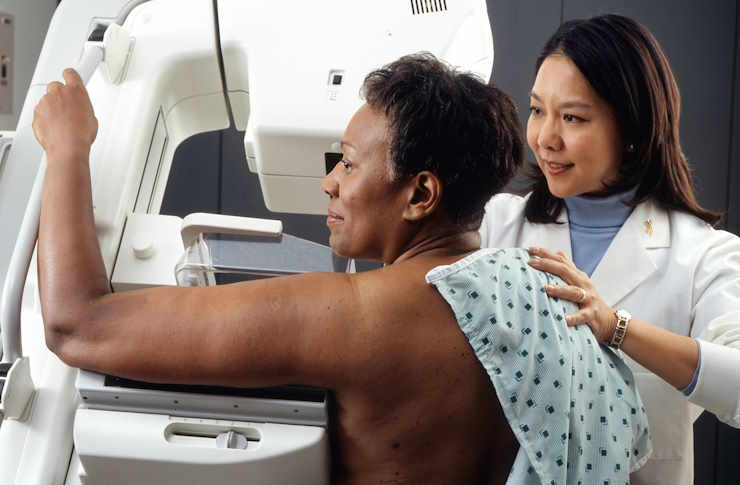Understanding Breast Cancer: Signs, Symptoms, and Treatment Options
Breast cancer is the most common cancer among U.S. women. Knowing its signs and symptoms is crucial for early detection, which can save lives. This article empowers you with essential information, guiding you on what to look for and how to respond. Be proactive in your health journey; understanding these vital details is key for effective management and peace of mind.

Understanding breast cancer: What every woman should know
Breast cancer develops when cells in breast tissue grow uncontrollably, forming tumors that can spread to other parts of the body. This disease occurs in both women and men, though it affects women at significantly higher rates. Understanding breast cancer begins with recognizing that it encompasses several different types, each requiring specific treatment approaches. The most common forms include invasive ductal carcinoma and invasive lobular carcinoma, which originate in different parts of the breast tissue.
Modern medical advances have dramatically improved breast cancer treatment outcomes over the past two decades. Five-year survival rates now exceed 90% when detected early, emphasizing the critical importance of awareness and regular screening.
Common signs of breast cancer you shouldn’t ignore
The most recognizable sign remains a new lump or mass in the breast or underarm area. However, breast cancer symptoms extend far beyond lumps. Changes in breast size or shape, skin dimpling resembling an orange peel texture, and nipple discharge warrant immediate medical attention. Breast pain, while less common as a primary symptom, should not be dismissed entirely.
Many women notice changes in breast appearance, including redness, scaling, or thickening of the nipple or breast skin. Swelling in part or all of the breast, even without a detectable lump, can indicate inflammatory breast cancer, an aggressive form requiring prompt treatment.
Less common symptoms to be aware of
Several subtle signs often go unrecognized as potential breast cancer indicators. Persistent itching around the breast or nipple area, changes in breast texture, and visible veins on the breast surface may signal underlying issues. Some women experience a burning sensation or unusual warmth in breast tissue.
Nipple retraction or inversion, particularly when it occurs suddenly, deserves medical evaluation. Back pain, though seemingly unrelated, can occasionally indicate breast cancer that has spread to the spine. Unexplained fatigue combined with other symptoms should prompt discussion with healthcare providers.
Risk factors for breast cancer development
Age represents the most significant risk factor, with two-thirds of invasive breast cancers occurring in women over 55. Genetic mutations, particularly BRCA1 and BRCA2, substantially increase breast cancer risk, though hereditary cases account for only 5-10% of all diagnoses. Family history of breast or ovarian cancer, especially in first-degree relatives, elevates individual risk levels.
Hormonal factors including early menstruation, late menopause, and hormone replacement therapy influence breast cancer development. Dense breast tissue, previous radiation exposure, and certain benign breast conditions also contribute to increased risk. Lifestyle factors such as alcohol consumption, obesity, and physical inactivity play important roles in risk assessment.
The importance of early detection in treatment success
Early detection remains the most powerful tool in fighting breast cancer effectively. Regular mammograms can identify tumors years before they become palpable, when treatment options are most effective and survival rates highest. The American Cancer Society recommends annual mammograms beginning at age 45, with the option to start at 40 for average-risk women.
In the United States, advanced imaging technologies including 3D mammography and breast MRI provide enhanced detection capabilities, particularly for women with dense breast tissue or high genetic risk. Many healthcare systems now offer same-day results and coordinated care services, reducing anxiety and streamlining the diagnostic process.
Breast cancer treatment costs and provider options
Treatment expenses vary significantly based on cancer stage, chosen therapies, and insurance coverage. Early-stage treatments typically range from $20,000 to $100,000, while advanced cases can exceed $200,000 annually. Most insurance plans cover standard treatments, though patients may face substantial out-of-pocket costs for newer therapies.
| Treatment Type | Average Cost Range | Insurance Coverage | Duration |
|---|---|---|---|
| Surgery (Lumpectomy) | $15,000 - $25,000 | Usually covered 80-100% | One-time procedure |
| Chemotherapy | $10,000 - $200,000 | Typically covered 70-90% | 3-6 months |
| Radiation Therapy | $10,000 - $50,000 | Generally covered 80-100% | 4-7 weeks |
| Targeted Therapy | $100,000 - $150,000 annually | Variable coverage 60-80% | Ongoing |
Prices, rates, or cost estimates mentioned in this article are based on the latest available information but may change over time. Independent research is advised before making financial decisions.
Breast cancer treatment has evolved into a highly personalized approach, with oncologists tailoring therapies to individual tumor characteristics and patient needs. Surgery, chemotherapy, radiation therapy, hormone therapy, and targeted treatments work individually or in combination to achieve optimal outcomes. Clinical trials continue advancing treatment options, offering hope for even better results in the future. Early detection combined with prompt, appropriate treatment provides the best opportunity for complete recovery and long-term survival.
This article is for informational purposes only and should not be considered medical advice. Please consult a qualified healthcare professional for personalized guidance and treatment.




